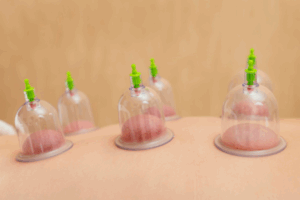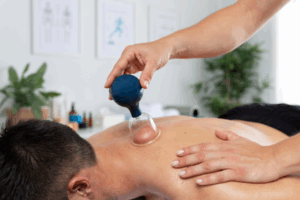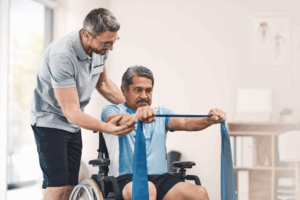Understanding the pain and frustration of tennis elbow, medically known as lateral epicondylitis, is essential. Experts offer insights into how physiotherapy for tennis elbow can be a game-changer for those struggling with this condition. In this article, we’ll explore how this straightforward, non-invasive treatment can significantly enhance recovery while making life more manageable.
Comprehending Tennis Elbow: Symptoms, Causes, and Impacts
Tennis elbow, or lateral epicondylitis, is more common than many think. It’s not just athletes who suffer but also manual laborers and even office workers who use their arms repetitively. The main symptoms include pain and tenderness on the outside of the elbow, which can radiate down the forearm and wrist. This pain can make everyday tasks, like shaking hands or holding a cup, difficult.
This condition often arises from overuse, where the elbow muscles and tendons become strained. People engaged in jobs requiring repetitive arm movements are greatly affected. Notably, it’s not limited to athletes; anyone who overuses these muscles can develop it. The prevalence amongst different groups suggests no one is entirely safe from this inconvenience.
In terms of treatment, physiotherapy for tennis elbow is often recommended by healthcare professionals as a first step. This conservative treatment helps alleviate pain and restore movement, minimizing the reliance on more invasive procedures. Physiotherapy employs exercises and manual therapy to strengthen and stretch the muscles and tendons involved, providing a natural form of healing.
Untreated tennis elbow can severely impact daily activities. It hampers the ability to perform simple actions, like turning a doorknob or lifting a kettle. Many misunderstand tennis elbow, believing rest alone will resolve it. Instead, turning to effective physiotherapy for tennis elbow promptly ensures faster recovery and helps prevent the condition from worsening.
How Physiotherapy Addresses Tennis Elbow: Techniques and Benefits
So, what does the physiotherapy for tennis elbow procedure involve? Initially, it begins with an assessment and diagnosis. The physiotherapist evaluates the elbow’s range of motion, strength, and stability to create a detailed treatment plan tailored to individual needs.
Key treatment approaches include:
- Supervised exercise programs: These exercises focus on strengthening the forearm muscles and improving flexibility. They help regain full function of the arm without any pain.
- Manual therapy: This involves hands-on techniques to reduce tension, improve motion, and ease pain. It’s crucial for enhancing range and ensuring smooth elbow movement.
- Complementary techniques: These might involve ultrasound or heat therapy to further reduce pain and inflammation.
What are the physiotherapy for tennis elbow benefits? Beyond pain relief, this therapy empowers patients. They learn exercises to do at home, promoting longer-term recovery and decreasing future injury risks. Thanks to its non-invasive nature, this approach is less intimidating for many compared to surgical options.
A benefit of the tennis elbow physiotherapy techniques is the multimodal approach they offer. Combining different methods ensures comprehensive care. An individualized treatment plan is vital because everyone’s situation varies. What works for one person might not work for another.
Overall, effective physiotherapy for tennis elbow offers natural healing that aligns with each person’s lifestyle, helping them return to normal activities, pain-free.
Evidence and Expertise: Studies, Practical Tips, and Expected Recovery
A growing body of research supports the effectiveness of physiotherapy for tennis elbow recovery time. Studies point out significant pain reduction and increased function when therapy is followed correctly. Tennis elbow physiotherapy techniques are shown to improve conditions in a few weeks, especially when combined with consistent home exercises.
Experts emphasize the importance of creating individualized plans. No two elbows are exactly alike, so customizing treatments is crucial for success. This tailored approach ensures that each person gets the best possible care suited to their specific condition.
Typical recovery time with physiotherapy for tennis elbow ranges from six weeks to several months, depending on severity. Important factors include adherence to prescribed exercises and avoiding actions that strain the elbow further.
To prevent recurrence post-recovery, here’s some simple advice: – Incorporate daily stretches to maintain elbow flexibility. – Gradually increase activity intensity to avoid overloading the joint. – Pay attention to body mechanics during activities to prevent strain. – Sticking to your exercise plan is essential for long-lasting results.
Consistent therapy and these practical measures can help avoid future flare-ups, making life easier and pain-free.
Exploring Financial and Accessibility Aspects of Physiotherapy
Financial considerations and accessibility significantly influence physiotherapy for tennis elbow choices, especially in places like India. Fortunately, this treatment often offers an affordable option compared to more invasive treatments like surgery.
Patients find that investing in consistent therapy reduces long-term costs by preventing the need for expensive procedures later on. Moreover, early intervention and regular therapy sessions can help minimize overall healthcare spending and improve outcomes.
In conclusion, if you’re experiencing elbow discomfort, consulting a physiotherapist might be your best step. Physiotherapy for tennis elbow not only offers effective relief but also fosters a proactive approach to health. Participating actively in rehabilitation can yield the best results, allowing for a swift return to daily activities.
As we’ve discussed, physiotherapy for tennis elbow is a natural, effective choice among many treatment options. With its focus on tailored care and long-term results, it’s worth exploring for anyone facing this tough condition. Choosing physiotherapy can lead to a better, pain-free life, making every action simpler and more enjoyable.






